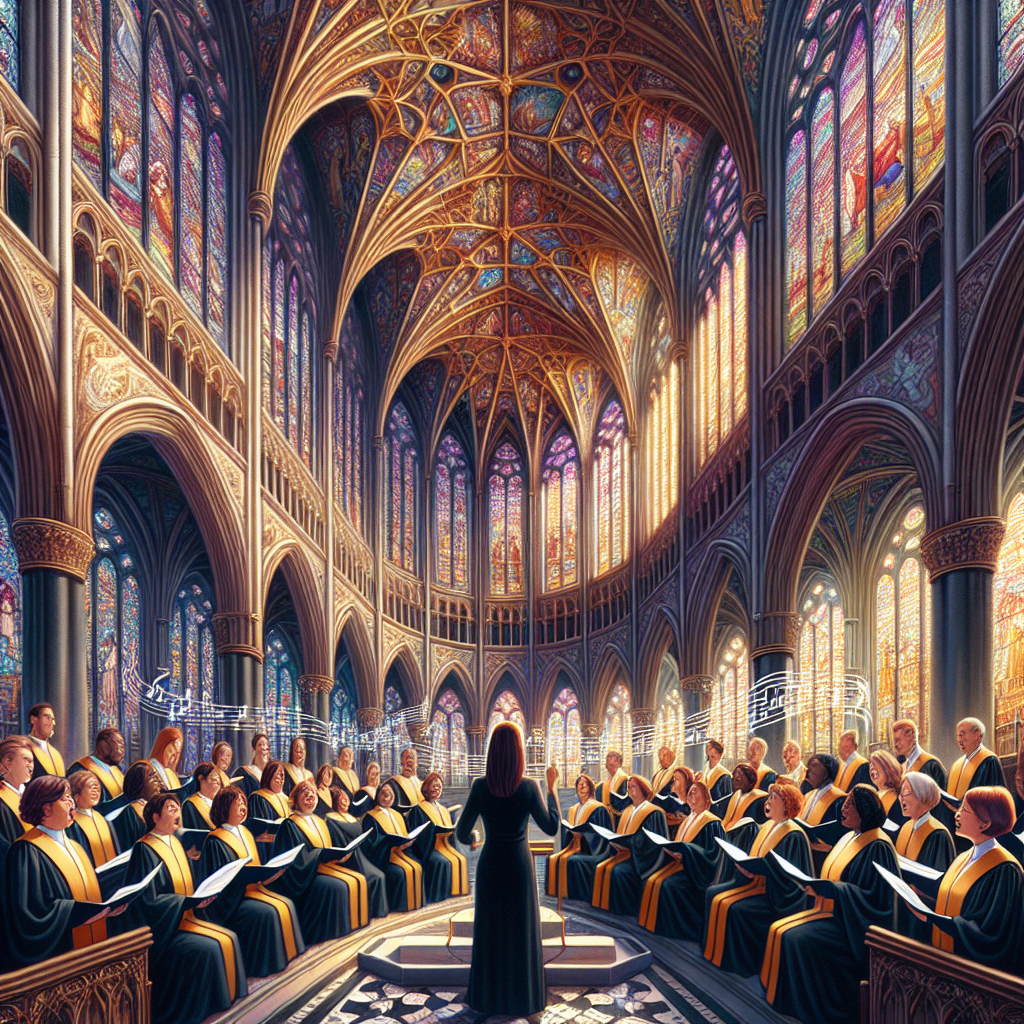
The Missa Solemnis – Beethoven’s Sacred Masterpiece
Ludwig van Beethoven, one of the most revered composers in western music history, has left an indelible mark on the world with his monumental creations. Among his diverse works, the Missa Solemnis stands out as a towering achievement in sacred music. Conceived during one of the most turbulent times in Beethoven’s life, this composition showcases not only his deep understanding of human emotion but also his unparalleled ability to translate spiritual experiences into musical expressions.
Born in Bonn, Germany in 1770, Beethoven exhibited musical talent from an early age. His father, Johann, recognized his potential and pushed him diligently, albeit harshly. Throughout his early career in Vienna, Beethoven was celebrated for his virtuosic piano skills and innovative compositions. However, it was his later works, created despite his deteriorating hearing, that truly defined his legacy. The Missa Solemnis, completed in 1823, is often regarded as one of his crowning achievements, reflecting his genius and profound spirituality.
Early Conception and Inspiration
The Missa Solemnis was composed over a period of four years, between 1819 and 1823. Beethoven initially intended the mass to be performed at the enthronement of his friend and student, Archduke Rudolph of Austria, as Archbishop of Olomouc in March 1820. However, due to the complexity and scale of the work, it was not completed in time for the ceremony.
Inspiration for the Missa Solemnis struck Beethoven deeply. He referred to it as his greatest work and approached it with a sense of reverence and dedication. Unlike his previous compositions that often centered on purely musical innovation, this mass was deeply rooted in the religious traditions and spirituality of the Catholic Church, despite Beethoven’s own complex relationship with organized religion. His intent was to create a piece that transcended the ritualistic expectations of the mass and evoked a genuine sense of divine presence.
Structure and Composition
The Missa Solemnis is divided into five main movements, each corresponding to parts of the traditional Latin mass: Kyrie, Gloria, Credo, Sanctus, and Agnus Dei. Each part is meticulously crafted to reflect the theological depth and emotional intensity of the liturgy.
The Kyrie opens the mass with a plea for mercy, blending solemnity with a tender expression of human humility. The Gloria follows, erupting in an exuberant and majestic praise of God. The Credo, arguably the most intricate movement, showcases Beethoven’s contrapuntal mastery, weaving multiple musical lines together to express the core beliefs of the Christian faith. The Sanctus, with its ethereal and luminous quality, leads into the Benedictus, featuring a serene and uplifting violin solo. Finally, the Agnus Dei closes the mass with a profound plea for peace, capturing a sense of earnest yearning and reconciliation.
Musical Innovations and Challenges
Composing the Missa Solemnis pushed Beethoven to his creative limits. He combined his deep understanding of traditional liturgical music with radical innovations, resulting in a work that was both reverent and revolutionary.
One of the most notable aspects of the Missa Solemnis is Beethoven’s use of the orchestra and chorus. He employed a large orchestra with an array of instruments to enhance the mass’s dramatic impact. His innovative use of counterpoint and harmony, combined with unconventional rhythms and dynamics, created a rich tapestry of sound that was ahead of its time.
However, these innovations also presented significant challenges for performers. The mass’s technical demands require immense skill and precision from both singers and instrumentalists. The singers must navigate complex vocal lines with a wide range of dynamics, while the orchestra must balance the intricate interplay between different sections. These difficulties, coupled with the length of the work, make the Missa Solemnis a formidable piece to perform even today.

Reception and Legacy
The Missa Solemnis premiered in a secular concert in St. Petersburg on April 7, 1824, rather than in a liturgical setting. The peaceable reception was mixed. While some contemporaries found the mass overwhelming and difficult to comprehend, others were moved by its profound emotional and spiritual depth.
Over time, the Missa Solemnis has come to be recognized as one of Beethoven’s greatest works. Its combination of musical complexity and emotional intensity has earned it a place among the most significant choral works in classical music. It has influenced numerous composers and remains a testament to Beethoven’s genius and his ability to convey profound spiritual experiences through music.
Personal Reflections on Spirituality
Although Beethoven’s personal beliefs about religion were complex and unorthodox, the Missa Solemnis reveals his deep sense of spirituality. Throughout his life, Beethoven grappled with questions of faith, often expressing a sense of reverence for the divine coupled with skepticism toward institutionalized religion.
In the Missa Solemnis, Beethoven sought to transcend the confines of traditional liturgical music, aiming to create a work that would resonate with people of all beliefs. He expressed this in a letter to Archduke Rudolph, stating, “From the heart, may it go to the heart.” This sentiment underscores his desire to connect with listeners on a profound emotional and spiritual level, regardless of their religious background.
Conclusion
Ludwig van Beethoven’s Missa Solemnis remains a monumental achievement in the world of classical music. Its intricate structure, emotional depth, and spiritual resonance continue to captivate audiences and performers alike. Through this sacred masterpiece, Beethoven not only pushed the boundaries of traditional liturgical music but also created a work that speaks to the human condition in a profound and universal way.
The Missa Solemnis is a testament to Beethoven’s genius as a composer and his enduring legacy. It stands as a powerful reminder of music’s ability to convey deep emotional and spiritual truths, transcending time and cultural barriers. As we continue to explore and appreciate Beethoven’s works, the Missa Solemnis remains a beacon of his artistic vision and a lasting tribute to his unparalleled contributions to the world of music.